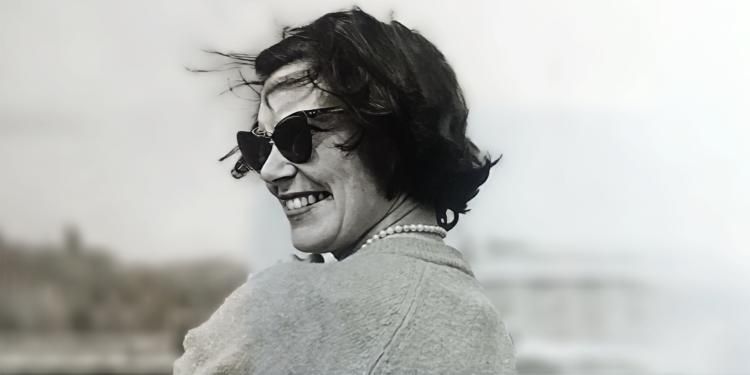Some of the more intriguing volumes on the Booker Library’s shelves are the ones that have, over the years, fallen out of print. One of these is Elizabeth Mavor’s A Green Equinox. Shortlisted in 1973, today it’s a conspicuous unknown compared to the novels it was up against: Beryl Bainbridge’s The Dressmaker, Iris Murdoch’s The Black Prince, and that year’s winner, J. G. Farrell’s The Siege of Krishnapur. Hopefully though, Mavor’s novel is about to reach new readers. Fifty years after it was first published, A Green Equinox is being rereleased this September, by McNally Editions in the US – where, full disclosure, I’m the editor who acquired it – and as a Virago Modern Classic in the UK.
Given how neglected Mavor’s reputation is today, it might come as a surprise to learn that when she made the Booker shortlist she was 46 years old and the author of three previous novels and two biographies; all of which had been very well received. The first, Summer in the Greenhouse (1959), appeared under Hutchinson’s ‘New Authors’ imprint, which had been announced two years earlier with the aim of drawing particular attention to exciting up-and-coming talent (and who published the debuts of five future Booker nominees, including, coincidentally, both Bainbridge and Farrell). ‘When a novel as good as this is written, and a new writer makes such an entrance, everyone can congratulate himself, a real discovery has been made,’ agreed the Glasgow Herald in their review of Mavor’s debut, while the TLS compared her writing to that of both Elizabeth Bowen and Elizabeth Taylor. I think her work has more in common with that of Iris Murdoch, A Green Equinox in particular. The two women were much more than just competitors for the Booker; Murdoch – who was only eight years her student’s senior – was one of Mavor’s tutors at St Anne’s College, Oxford, and they remained friends long after Mavor matriculated.
Throughout the 1960s, Mavor’s subsequent novels – The Temple of Flora (1961) and The Redoubt (1967), a new edition of which was published last year by Gretton Books – continued to win her praise. She also established herself as a perceptive and diverting biographer. The Observer commended her first foray in this genre, The Virgin Mistress: A Study in Survival (1964) – which documents the life of Elizabeth Pierrepont, Duchess of Kingston (1721-1788), an English courtesan famous for her adventuress lifestyle – as ‘high-spirited and entertaining’. The Telegraph, meanwhile, declared it a ‘delightful […] human, well-documented book about one of the most extraordinary Englishwomen of the eighteenth century’.
Mavor’s second biography, The Ladies of Llangollen: A Study in Romantic Friendship (1971), tells the story of the cross-dressing aristocratic companions Lady Eleanor Butler and Sarah Ponsonby. In 1778, these Irish gentlewomen scandalised their families by eloping to Wales, where they henceforth lived together on their own terms. Not only is it her best-known work, but it makes an elucidating companion piece to A Green Equinox. Although the Ladies lived together as in a marriage, Mavor isn’t convinced that their relationship was a sexual one. She argues that the nuances of what she terms their ‘romantic friendship’ – ‘tenderness, loyalty, sensibility, shared beds, shared tastes, coquetry, even passion’; in essence, ‘much that we would now associate solely with a sexual attachment’ – can’t be neatly mapped onto a matrix of modern alliances: ‘Depending as they did upon time and leisure, they were aristocratic, they were idealistic, blissfully free, allowing for a dimension of sympathy between women that would not now be possible outside an avowedly lesbian connection.’
One certainly doesn’t have to have read The Ladies of Llangollen to appreciate or enjoy A Green Equinox, but it does give us a way to read the singular romantic escapades of Mavor’s fictional heroine, the eccentrically though aptly named Hero Kinoull. The novel is a Bildungsroman of a sort, even if Hero – an antiquarian bookseller and binder who lives in the English village of Beaudesert – isn’t in the first flush of youth. Between the spring and autumn equinoxes of a single year, she undergoes a journey of emotional, spiritual and romantic transformation, as she attaches herself in turn to three distinctive love objects; each of whom represents a different state of being, and teaches her a different way of being in the world.











